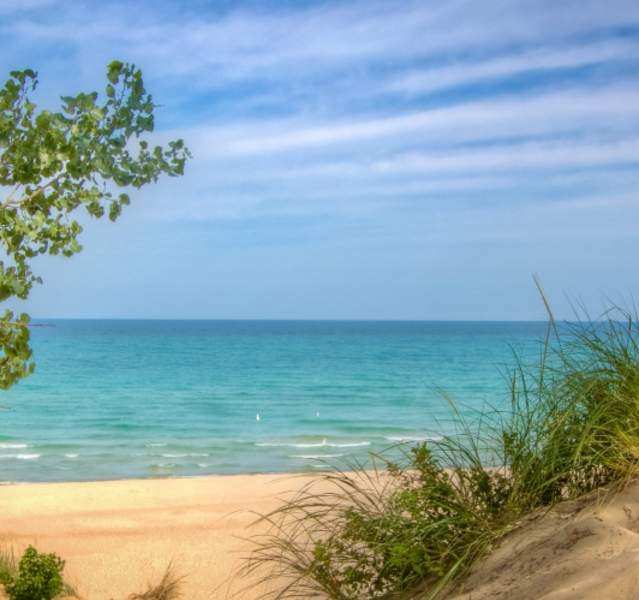Indiana Dunes Flower Quest—AUGUST
Autumn may be just around the corner, but there are still plenty of floral gems blooming in the Indiana Dunes! There’s still time to go on the Indiana Dunes Flower Quest, and see how many you can spot before they disappear for another year!
How many of these fleeting wildflowers can you find? We’ve created an online reference below for you to track your progress. In the interest of being environmentally friendly, we encourage you to keep a mental note of your progress or take notes using your smartphone.
![]()
Be sure to tag @indianadunes and use #dunesflowerquest.
Need some help identifying your discoveries? Try identify.plantnet.org.
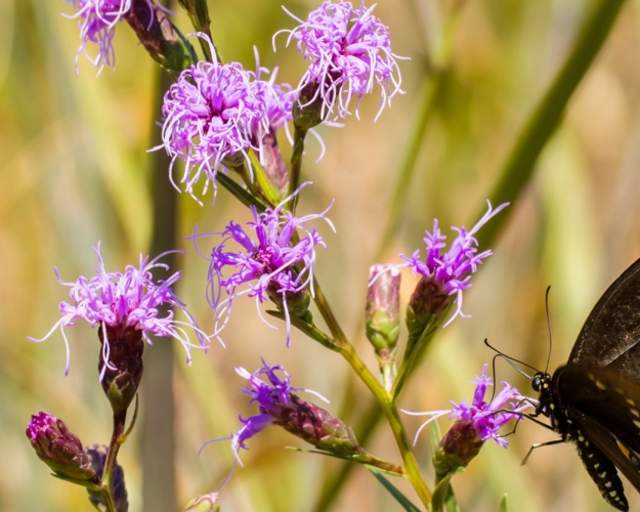
Blazing Star
This beautiful flower features a blossoming spike that is roughly half of its entire height, and it can grow up to five feet tall! The blossoms themselves are purple, with long lighter-purple stamens that are quite a bit longer than the flower, giving the plant a tangled, almost fuzzy appearance. And these unique-looking flowers bloom from the top down!
Reference the Quest Map to help guide you to this flower.
Blue Lobelia
These lovely blue flowers bloom in clusters around a spike that can grow up to four feet in length. The tubular blossoms feature sets of upper and lower “lips,” with two petals on the upper lip and three on the bottom. The plant’s full name might surprise you : blue lobelia siphilitica. The misleading moniker stems from the belief that the roots could be used to cure syphillus, but, in fact, the plant induces vomiting and is considered poisonous!
Reference the Quest Map to help guide you to this flower.

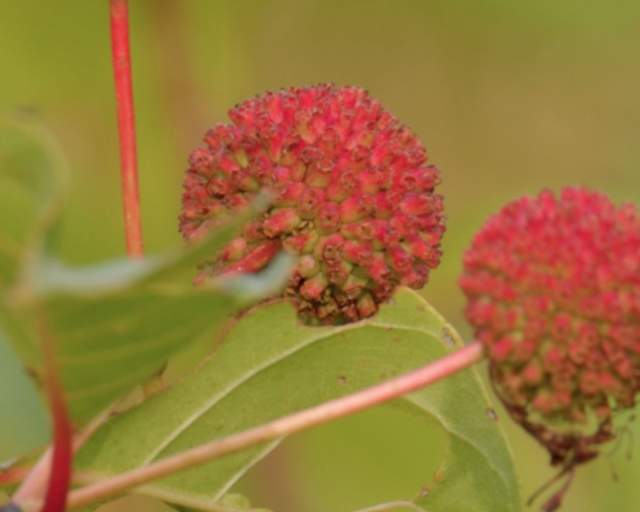
Button Bush
This unique flower looks a little like a golf ball with delicate spines all over it (or some say a pin cushion!), but it’s actually a sphere of tightly clustered white blossoms. The buttonbush grows in wetlands and other low-lying areas, and its seeds are a favorite for ducks and shorebirds. In bloom, it attracts butterflies, and because bees also enjoy it, it’s also called a honey-bell!
Reference the Quest Map to help guide you to this flower.
Cardinal Flower
The vibrant red cardinal flower, or Lobelia cardinalis, shares some features with the blue lobelia: both have a flowering spike with tubular blossoms made up of upper and lower “lips.” Unlike its blue cousin, however, the cardinal flower’s petals are more angular, and, of course, its color is unmistakable! It’s said to derive its name from the bright red vestments worn by Roman Catholic cardinals!
Reference the Quest Map to help guide you to this flower.

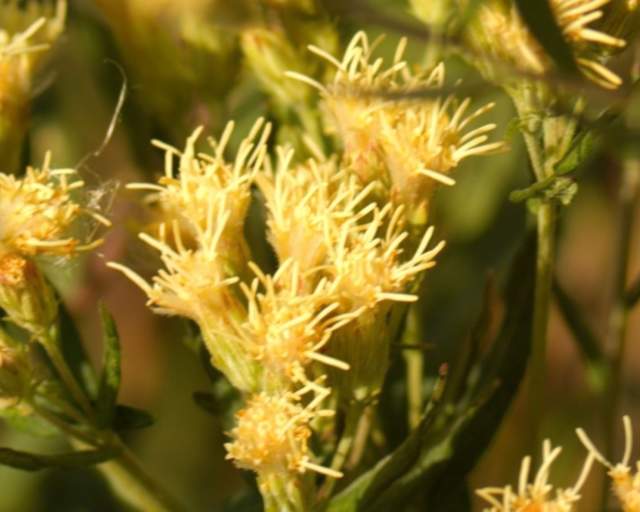
False Boneset
These plants have branching stems that reach ever upward, culminating in clusters of white flowers. After the flowers bloom, long white “hair” (achenes) replaces them, and some find it more attractive than the flowers, although the pollinators that love this plant would likely disagree! Oh, and as the name suggests, there is a “true” bonestem that this plant resembles: the key difference is in the leaves. The leaves on the false boneset are more slender and serrated.
Reference the Quest Map to help guide you to this flower.
Ghost Pipe
This incredible white plant has found an amazing means of thriving even without chlorophyll, which not only makes plants green, but is essential to photosynthesis. How is this possible? Often confused for fungus because of its “ghostly” color, the ghost pipe is actually parasitic, gaining nutrients from fungus that feeds on the roots of trees! The ghost pipe grows a single white flower, but you’ll have to look sharp, as they only bloom for a week or two.
Reference the Quest Map to help guide you to this flower.
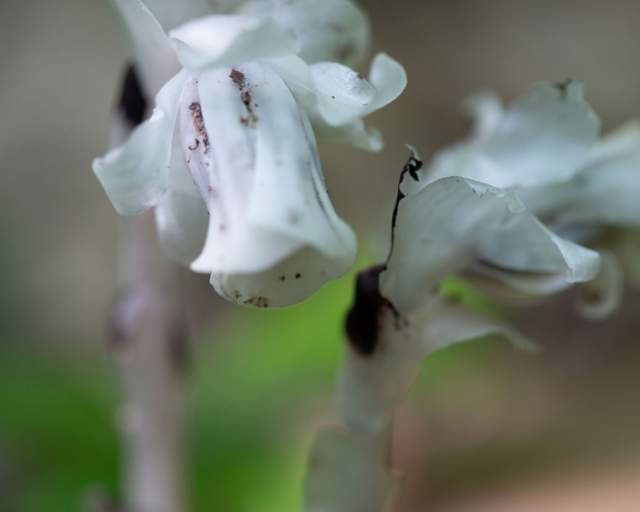
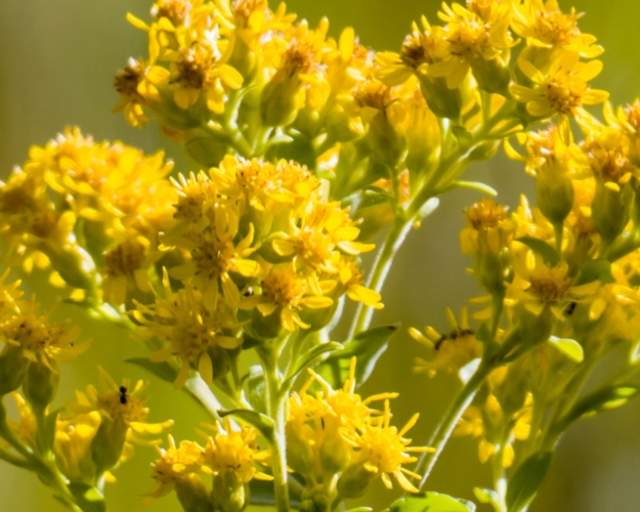
Goldenrod
Several species of goldenrod bloom in Indiana, in a variety of soils. Some have hairy stems, and some have smooth, but all share the small bright yellow flowers that were once used for tea and even dye! While many people blame these beauties for hay fever, goldenrod depends upon pollinators to spread their seeds, and not the wind, so they’re innocent! However, because of their hardy root system, and because they originated in Europe, there is some debate regarding whether or not goldenrod is an invasive species or now thoroughly naturalized.
Reference the Quest Map to help guide you to this flower.
Hoary Vervain
This distinctive plant grows up to four feet high, with a stem covered with long white (hoary) hairs and a spike of purple flowers. It’s a favorite of butterflies and many species of bees, and a French royal botanist recorded its presence in the Indiana region back in 1795!
Reference the Quest Map to help guide you to this flower.
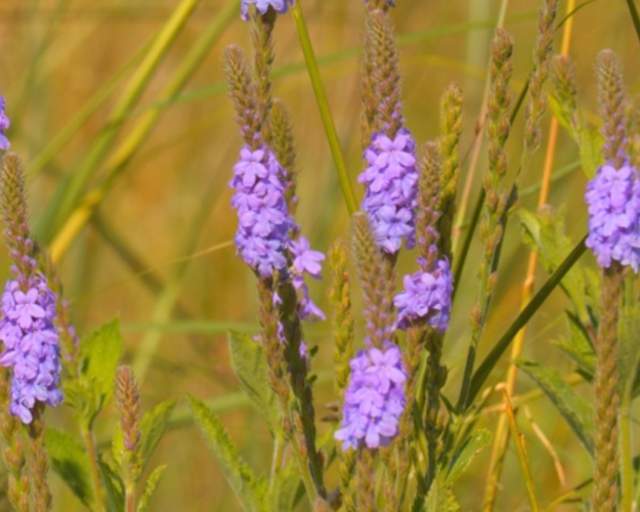

Horse Mint
Also known as “spotted bee balm,” horse mint is instantly recognizable: its flowers have hairy yellow petals covered with purple spots! The top petal hangs low over the bottom petal, and it has a strong fragrance. These distinctive plants attract both bees and butterflies, and it can bloom for up to two months!
Reference the Quest Map to help guide you to this flower.
Joe-Pye Weed
In spite of its name, the joe-pye “weed” is a remarkable native wildflower that can grow up to seven feet tall! A favorite of bees and butterflies, joe-pye weed has clusters of tall flowers that can vary in color from white to pink to purple. As for its name, the origins are lost to history, with some stories tracing it back to a Native American who used the plant for medicinal purposes. There are several varieties of this plant, many with names as colorful as the flowers, like King of the Meadow and Liver Hemp!
Reference the Quest Map to help guide you to this flower.
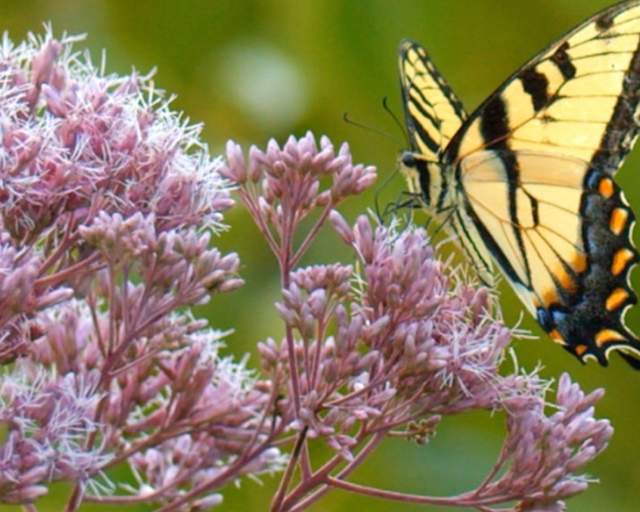
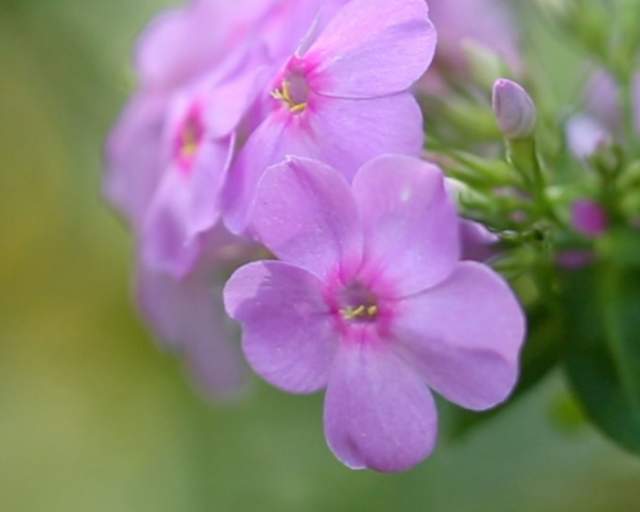
Marsh Phlox
These lovely flowers have narrow tubes leading to five petals ranging in color from blue to violet. While they can grow up to four feet tall, they are often much shorter. This plant is also sometimes called the smooth phlox. There are several species of phlox, so look closely: can you see the stamen (the slender stalk in the middle of the flower)? If so, you’ve found the marsh phlox!
Reference the Quest Map to help guide you to this flower.
Rosemallow
This lovely flower thrives in marshes and wetlands. In fact, another common name for this flower is “marsh mallow.” You’ll know you’ve spotted one when you spy the flash of crimson in the center of the snowy white petals! And don’t give up if you miss them on your first visit: they have a blooming season that can last up to two months.
Reference the Quest Map to help guide you to this flower.
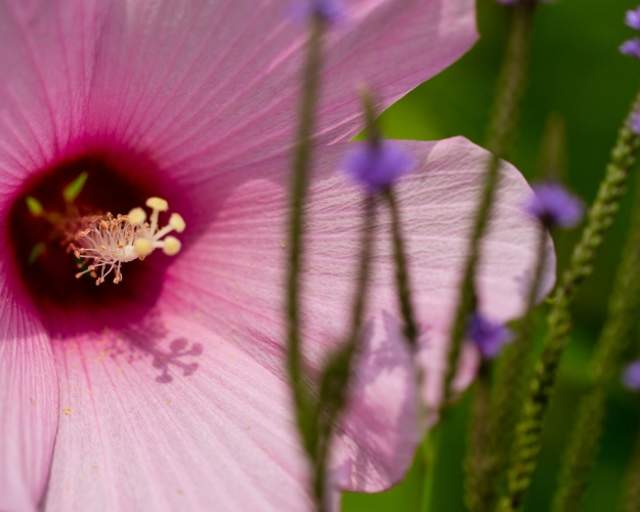
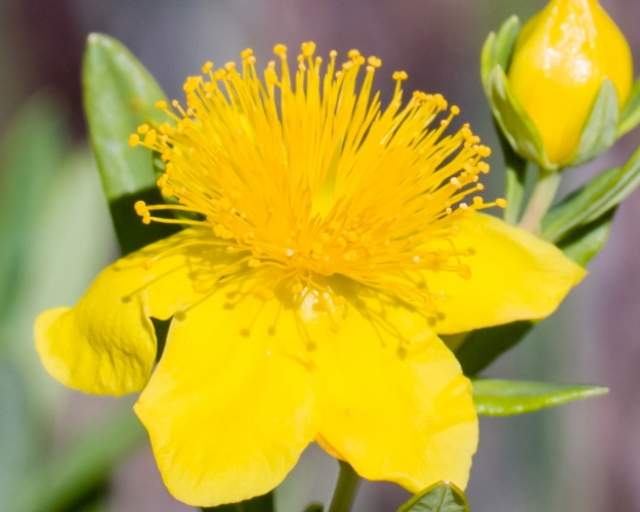
Shrubby St. John's Wort
This lovely yellow flower can bloom up to two months in late summer: each blossom has five petals which surround a multitude of stamen (those slender stalks found in the middle of flowers). Another distinctive feature is the plant’s “woody” stem that even has bark!
Reference the Quest Map to help guide you to this flower.
Thistle
There are a number of species of thistle, and some, like the Canada thistle, are considered invasive. However, the tall thistle (pictured) is a native plant, and, far from being a nuisance, is a favorite of birds and insects. It can be difficult to tell the difference between a native thistle and an invasive one, but here’s a clue: most native species have fine “hair” on the undersides of their leaves!
Reference the Quest Map to help guide you to this flower.


Trumpet Creeper
This flowering vine can sport reddish-orange “trumpet-shaped” blossoms up to three inches in length. Because it can spread so well, in some places it has also been called the “devil’s shoestring”! Hummingbirds love these flowers, though, and they can bloom throughout the summer.
Reference the Quest Map to help guide you to this flower.
A Note on Invasive Wildflowers
The Indiana Dunes are home to so many beautiful wildflowers. Unfortunately, not all of them belong here. Over the years, non-native species have taken root in the region, crowding out native species that are crucial for supporting fragile ecosystems. The parks, non-profit organizations, and volunteers work diligently to restore these areas.
If you spot an invasive species, please leave it be: it takes careful oversight to remove these plants without damaging the area, and poison ivy, ticks, and sometimes even toxins from the plants themselves can be a hazard.
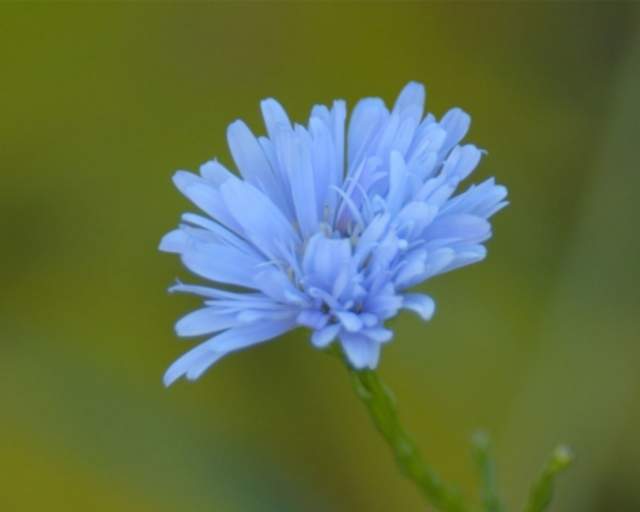
Chicory
These purple flowers are part of the sunflower family. Although they may look lovely, they are invasive, crowding out native plants. They are thought to have been brought over from Europe in the nineteenth century.

Oriental Bittersweet
This vine is native to Asia, and it has small greenish flowers that are replaced by bright reddish-orange berries. With its bright berries, it was once popular both for gardens and decorating, but its vines can spread quickly and choke native trees.

Purple Loosestrife
With multiple purple flowers growing from a tall spike, the purple loosestrife was brought over from Europe in the nineteenth century as a colorful addition to gardens. This hardy plant poses such a danger to native wildflowers that its sale was outlawed in 1996.
More Things to See & Do
Outdoor Adventures
Shaped by nature, made for adventure. In the Indiana Dunes, it’s all about fun times and tan lines—from…
Dunes Deals
Shake off the sand south of the Indiana Dunes! Dig up real savings with Indiana Dunes Deals and make the most of…
Indiana Dunes Shop
Don’t just experience the Indiana Dunes; take it home with you. Find your new favorite T-shirt, hoodie, or…
Pet Friendly
There’s a reason Indiana Dunes National Park was named the #1 pet-friendly attraction in the state of Indiana…
Arts & Entertainment
It’s not all sand-fringed lakes and epic sunsets. Here, you’ll find a vibrant arts scene stoked by a…
Drop-in Volunteering
Be the Change — Volunteer! Get more involved with the Indiana Dunes!
The story of the monarch butterfly is one of incredible transformation and epic travel. We are also part of this adventure, and each of us can play a key role in the survival of the monarch…
Plant Your Own Monarch Garden
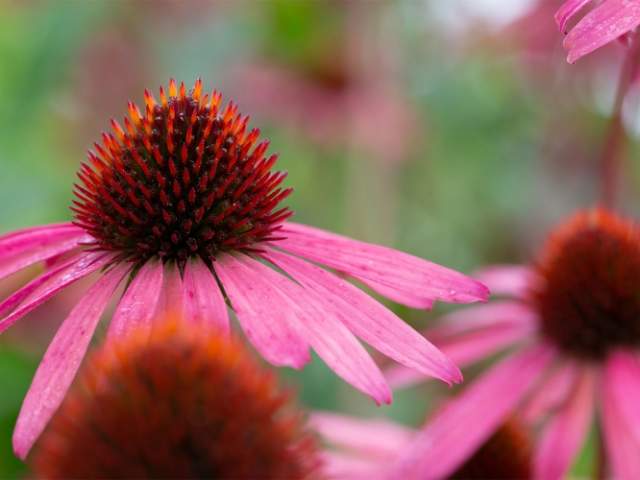

15% Off
Applies to native plants and monarch butterfly plants. Valid on regularly priced plants, shrubs, and trees only. Show this coupon at the register.

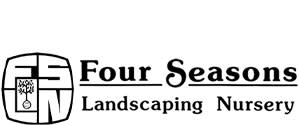
15% Off
Applies to native plants and monarch butterfly plants. Valid on regularly priced plants, shrubs, and trees only. Show this coupon at the register.
Book a Place to Stay
Bed & Breakfasts
Feel like family with intimate accommodations that range from nature-inspired retreats in the woods…
Hotels & Inns
A convenient stay located near downtown? What about a country retreat heaped in Old World charm? Or…
Tales from the Dunes
Indiana Dunes Blog
Indiana Dunes National Park is 5th in the nation for biodiversity. That’s more than Yellowstone, Grand Teton, and the Everglades. Read more about monarchs and other diverse flora and fauna.
Sounds of the Prairie at Kankakee Sands
- 3 minute read
This spring and summer, I have been enjoying the call of the grasshopper sparrow—a dry, insect-like buzz that…
Spotlight on Wetlands and the Virginia Rail
- 5 minute read
Spring has sprung and that means our Kankakee Sands wetlands are teeming with activity. The Kankakee Sands Bird…
Why We Should Try to Appreciate Spiders
- 5 minute read
Did you know that the first week of April is National Be Kind to Spiders Week? To be kind to spiders (that is, to…
Interesting Facts About the Indiana Dunes
- 6 minute read
There's more to the Indiana Dunes than warm sand, blue water, and miles of hiking trails. For example, as of…
Walking in a Winter Wonderland
- 5 minute read
It’s December, and I find myself singing along to all the holiday songs on the radio and playing in the…
